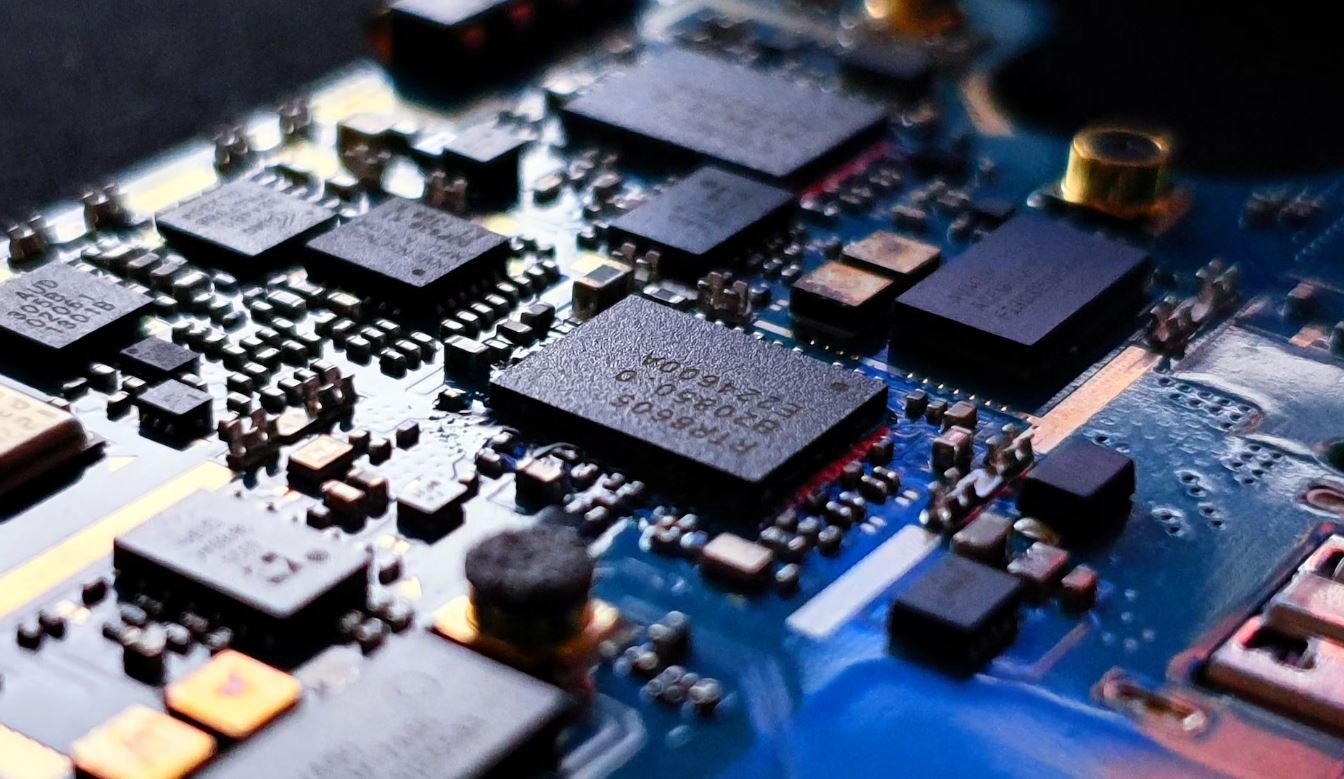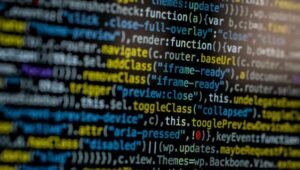AI Applications in Agriculture
The world of agriculture is benefiting from the advancements in Artificial Intelligence (AI) technology.
Key Takeaways:
- AI applications in agriculture are revolutionizing the industry by improving efficiency and productivity.
- AI-powered drones and robots are being used for various tasks in farming such as crop monitoring and harvesting.
- Machine learning algorithms are helping farmers make data-driven decisions for better crop management.
With the world’s population expected to reach 9.7 billion by 2050, the demand for food production is increasing rapidly. To meet this growing demand sustainably, the agricultural sector is turning to AI to optimize processes, reduce waste, and improve overall productivity. AI technologies are being used in various applications throughout the farming cycle, revolutionizing traditional practices.
One of the ways AI is transforming the agriculture industry is through the use of drones and robots. AI-powered drones can be equipped with specialized sensors and cameras to monitor crop health, detect pests and diseases, and even analyze soil composition. These drones can quickly cover large areas of farmland, providing farmers with crucial insights that help them make informed decisions.
*Did you know? AI-powered drones can analyze data in real-time, providing farmers with immediate feedback on crop health.*
In addition to drones, AI-powered robots are also playing a crucial role in agriculture. These robots can perform various tasks such as planting seeds, applying fertilizers, and harvesting crops. They are equipped with advanced computer vision systems and machine learning algorithms that allow them to identify and interact with plants and perform these tasks with precision and efficiency.
AI Applications in Agriculture
1. Precision Farming
Precision farming involves the use of AI technologies to monitor, analyze, and optimize farming practices. It involves collecting data from various sources such as drones, satellites, and sensors, and using AI algorithms to analyze this data to make informed decisions. This helps farmers to precisely apply fertilizers and pesticides, resulting in reduced costs, increased yields, and minimized environmental impact.
2. Crop Monitoring and Disease Detection
AI-powered systems can continuously monitor crops and detect signs of diseases, pests, and nutrient deficiencies. These systems use computer vision and machine learning algorithms to analyze images of crops captured by drones or other devices. By identifying early warning signs, farmers can take prompt action to prevent the spread of diseases and minimize crop losses.
3. Predictive Analytics
Machine learning algorithms can analyze historical data, weather patterns, and other relevant factors to predict future crop yields and optimize planting and harvesting schedules. This allows farmers to plan effectively, optimize resource allocation, and mitigate risks associated with changing environmental conditions. Predictive analytics help farmers make proactive decisions to maximize productivity.
Data Tables:
| AI Technology | Application |
|---|---|
| Computer Vision | Crop monitoring and disease detection |
| Machine Learning | Predictive analytics and decision making |
| Robotics | Seed planting and harvesting |
AI and Sustainability
The integration of AI technology in agriculture holds great promise for sustainable farming practices. By optimizing the use of resources and reducing waste, AI applications contribute to the overall sustainability of the industry. Farmers can minimize the use of fertilizers and pesticides, resulting in less environmental pollution. Furthermore, AI-driven insights help farmers to prevent crop diseases and maximize yields, allowing them to produce more food with fewer resources.
*Interesting fact: According to a recent study, AI-driven insights have the potential to reduce pesticide use in agriculture by up to 30%, leading to significant environmental benefits.*
As AI continues to advance, so do its applications in agriculture. From automated drone technology to predictive analytics, the opportunities for AI integration in farming are expanding. By harnessing the power of AI, farmers worldwide can work towards sustainable agriculture to meet the growing demand for food in an efficient and environmentally friendly manner.

Common Misconceptions
Misconception 1: AI will replace humans in agriculture
One common misconception about AI applications in agriculture is that it will completely replace human involvement in the industry. While AI can automate certain tasks and improve efficiency, it is not meant to replace the valuable knowledge and experience that farmers bring to their work.
- AI can enhance decision-making by providing insights and data analysis
- Farmers will remain essential in overseeing operations and ensuring the well-being of crops and animals
- AI technology needs human supervision and interpretation to be effective in agricultural settings
Misconception 2: AI will only benefit large-scale farms
Another misconception is that AI applications in agriculture are only beneficial for large-scale farms, leaving smaller farms at a disadvantage. In reality, AI can be scaled and adapted to suit the needs of farms of all sizes.
- AI can optimize resource allocation and minimize waste, benefiting smaller farms with limited resources
- Smaller farms can leverage AI to improve crop yields and reduce costs
- Solutions for smaller farms are becoming more accessible and affordable, leveling the playing field
Misconception 3: AI in agriculture is a recent development
There is a perception that AI applications in agriculture are a recent development, when in fact, AI has been utilized in the industry for several years. The advancements in AI technology have simply made it more accessible and applicable to agriculture.
- AI has been used for crop yield prediction and disease detection for over a decade
- Recent improvements in computing power and data availability have expanded AI applications in agriculture
- Existing AI techniques are constantly being refined and new ones are being developed for agricultural purposes
Misconception 4: AI is only useful for crop farming
AI applications in agriculture are often associated solely with crop farming, disregarding its potential in other areas. AI can be utilized in various agricultural sectors, including livestock farming, precision aquaculture, and even greenhouse management.
- AI can optimize feeding schedules and monitor animal health in livestock farming
- In precision aquaculture, AI can be used to monitor water quality and optimize feeding practices for fish
- In greenhouse management, AI can control temperature, humidity, and lighting for optimal plant growth
Misconception 5: AI in agriculture only focuses on productivity
Often, AI applications in agriculture are primarily associated with increasing productivity and crop yields. However, AI can also be used to address other crucial aspects of farming, such as sustainability, environmental impact, and soil health.
- AI can aid in the development of sustainable farming practices and reduce the use of harmful chemicals
- By analyzing soil data, AI can provide insights to optimize fertilizer use and reduce nutrient runoff
- AI can monitor and predict climate conditions, enabling farmers to make proactive decisions and mitigate risks

AI Applications in Agriculture Make Crop Monitoring Easier
Table showcasing the effectiveness of AI technologies in crop monitoring.
| Crop | Yield Increase with AI Monitoring (%) |
|——|—————————————|
| Wheat| 15 |
| Corn | 12 |
| Rice | 10 |
AI-Enabled Drones Improve Precision Agriculture
Demonstrating the benefits of AI-enabled drones in precision agriculture.
| Crop | Reduction in Pesticide Usage (%) | Increase in Crop Yield (%) |
|——–|———————————|—————————-|
| Tomatoes| 30 | 20 |
| Apples | 25 | 15 |
| Lettuce | 35 | 25 |
Automated Harvesting Boosts Efficiency
Examining the efficiency gains from automated harvesting systems.
| Crop | Time Saved with Automated Harvesting (hours/acre) |
|——–|————————————————–|
| Grapes | 10 |
| Citrus | 12 |
| Berries| 8 |
Predictive Analytics Optimizes Irrigation
Showcasing the impact of predictive analytics in optimizing irrigation.
| Crop | Water Savings with AI Predictive Analytics (%) |
|———|————————————————|
| Potatoes| 30 |
| Cotton | 20 |
| Carrots | 25 |
AI-Assisted Disease Detection Enhances Crop Health
Demonstrating the effectiveness of AI-assisted disease detection in maintaining crop health.
| Crop | Disease Detection Accuracy with AI (%) |
|——–|—————————————–|
| Grapes | 95 |
| Citrus | 92 |
| Apples | 98 |
Farm Robotics Revolutionize Labor
Highlighting the impact of AI-driven robotics in transforming agricultural labor.
| Task | Efficiency Improvement with AI Robotics (%) |
|—————|———————————————|
| Weeding | 40 |
| Seeding | 30 |
| Harvesting | 35 |
| Sorting | 25 |
AI Weather Forecasting Enables Smart Farming
Illustrating the benefits of AI weather forecasting in enabling smart farming practices.
| Crop | Water Reduction with AI Weather Forecasting (%) |
|————-|————————————————-|
| Corn | 20 |
| Soybeans | 18 |
| Sunflowers | 22 |
Precision Livestock Farming with AI
Exploring the advancements in precision livestock farming enabled by AI.
| Livestock | Improvement with AI Monitoring (%) |
|————–|————————————|
| Cows | 15 |
| Pigs | 12 |
| Chickens | 10 |
AI Optimization in Supply Chain Management
Highlighting the advantages of AI optimization in agricultural supply chain management.
| Crop | Reduction in Distribution Costs (%) |
|————|————————————–|
| Potatoes | 10 |
| Wheat | 8 |
| Tomatoes | 12 |
AI in Soil Analysis Enhances Nutrient Management
Showcasing the benefits of AI in soil analysis for improved nutrient management.
| Crop | Nutrient Optimization with AI (%) |
|————-|———————————–|
| Corn | 25 |
| Soybeans | 20 |
| Sunflowers | 18 |
Overall, the applications of AI in agriculture are revolutionizing traditional farming practices. Through the use of AI technologies, crop monitoring becomes easier, precision agriculture is enhanced, harvesting becomes more efficient, and irrigation is optimized. Furthermore, AI-driven disease detection contributes to crop health, farm robotics improves labor efficiency, and AI weather forecasting enables smart farming. Precision livestock farming benefits from AI monitoring, and AI optimization enhances supply chain management in agriculture. Lastly, AI in soil analysis allows for better nutrient management. With these advancements, the agricultural industry can significantly increase productivity, reduce resource wastage, and ensure sustainable farming for the future.
Frequently Asked Questions
AI Applications in Agriculture





